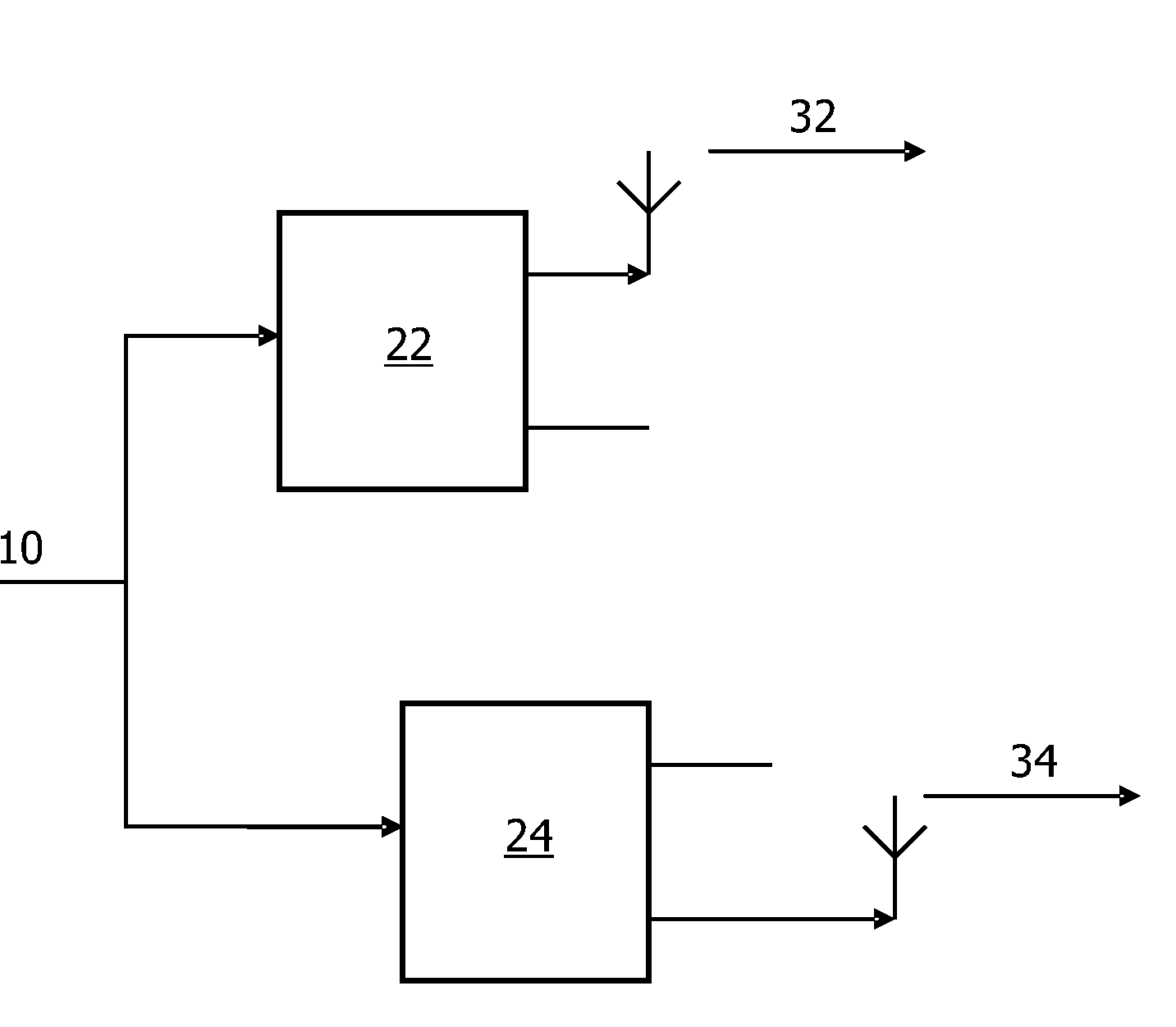Space-time/space-frequency coding for multi-site and multi-beam transmission
a multi-site and multi-beam technology, applied in the field of spacetime/spacefrequency coding for multi-site and multi-beam transmission, can solve the problems of difficult to achieve high data rate to these mts, interference to the reception of the other stream, and macro-diversity techniques from 3g are therefore not directly applicable to these future systems, so as to improve throughput and coverage in cellular systems
- Summary
- Abstract
- Description
- Claims
- Application Information
AI Technical Summary
Benefits of technology
Problems solved by technology
Method used
Image
Examples
first embodiment
[0030] an OFDM broadcast downlink is provided in a UMTS LTE network. Each of several cell-sites (corresponding to a base station device or enhanced Node B (E-Node B) in 3G terminology) supports transmissions from more than one antenna, each arranged to cover overlapping geographical areas.
[0031]FIG. 2 shows a schematic block diagram of a transmission arrangement according to the first embodiment with multiple transmission sites. An input signal 10 is supplied to each of a first space-time coder 22 which generates a first part 32 of a transmission signal and a second space-time coder 24 which generates a second part 34 of the transmission signal.
[0032]The transmissions from the same cell-site are synchronized, and the cell-sites are synchronized with each other over an extended geographical area. The synchronization may apply at both OFDM symbol level and frame level.
[0033]Furthermore, the same predetermined synchronization sequence (or data pattern) is transmitted from all the anten...
second embodiment
[0045] an OFDM macro-diversity scheme is provided in a UMTS LTE network.
[0046]The second embodiment is similar to the first embodiment, except that the transmission is intended for a particular MT, and the signals are transmitted from a limited number of cell sites (or antennas at one cell site), e.g., an active set allocated to the MT. The different transmissions have different parts of a space-time block code applied.
third embodiment
[0047] the proposed scheme is applied to UMTS Wideband CDMA (WCDMA) system with beamforming (e.g., by two virtual antennas) and common pilots.
[0048]In the third embodiment the Alamouti space-time block code can be applied and each of the two parts of the space-time block code is transmitted using a different beam (i.e. different virtual antennas). The physical antennas of the beamforming array are located at the same site. At the receiver the required channel estimates are derived from measurements of two orthogonal common pilot signals transmitted from different physical antennas (not beamformed), together with knowledge of the beamforming weights which are transmitted on a separate signaling channel.
PUM
 Login to View More
Login to View More Abstract
Description
Claims
Application Information
 Login to View More
Login to View More - R&D
- Intellectual Property
- Life Sciences
- Materials
- Tech Scout
- Unparalleled Data Quality
- Higher Quality Content
- 60% Fewer Hallucinations
Browse by: Latest US Patents, China's latest patents, Technical Efficacy Thesaurus, Application Domain, Technology Topic, Popular Technical Reports.
© 2025 PatSnap. All rights reserved.Legal|Privacy policy|Modern Slavery Act Transparency Statement|Sitemap|About US| Contact US: help@patsnap.com


